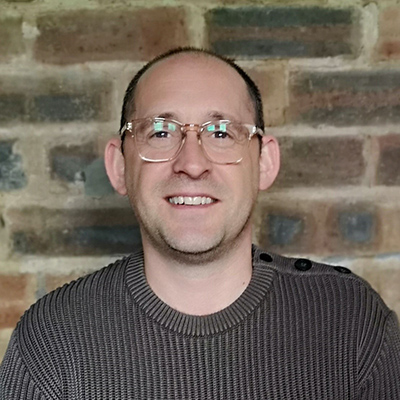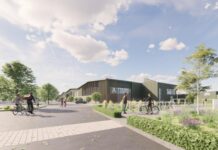
A construction recruitment specialist believes a long-term approach to training and development is necessary to help solve the escalating labour shortage problem.
Richard Samuels, managing director of Glasgow-headquartered James Gray Recruitment, told Project Scotland that the construction industry must do more to make it an attractive proposition for top talent.
He also stressed the importance of creating a structured career path for tradespeople, citing current difficulties for such individuals who wish to move up the ladder into more senior roles.
“We have an environment that can be very low margin and at times a hand to mouth existence,” he explained. “Businesses aren’t confident in investing in talent and in training and development because they’re not sure what the future holds.
“Construction is a huge part of the economy, so in my opinion it needs more government support to encourage these businesses to attract, retain and develop the construction professionals and tradespeople of the future. If you’re not bringing in new talent and you’ve got an ageing population at the other end, the problem is only going to get worse.”
Richard has been involved in construction recruitment since 2000. James Gray Recruitment started trading in 2006. The company’s core market traditionally was white collar construction professionals, but the business has diversified in recent years and is now involved in recruitment for a range of disciplines from civil engineering to engineering design, construction trades and cost and project management principally in the UK and USA.

The company has grown during the pandemic, with employee numbers rising from eight to 28 in just 15 months.
“The pandemic caused a pent up demand for construction services,” Richard added. “Talent shortages are prevalent right across the board. In every market we’re in, and every discipline, there’s significant talent shortages.
“In addition to this, materials costs are going up and labour costs are increasing. It’s a good environment for a recruiter because there’s demand there, but it’s a challenging environment.”
Richard explained that intermediate and senior level individuals are ‘massively’ in demand right now, which is driving up salary levels to an ‘unsustainable’ level. That is partly due to historical issues such as an ageing workforce and businesses failing to invest in new talent due to sector unpredictability. There’s also still an overhang from the financial crisis of a decade ago when many young people left the industry and businesses scaled back on apprenticeships.
Richard believes the Covid challenges could be felt for some time to come, suggesting that those who graduated from university with construction degrees at the height of the pandemic found themselves in a similar position to those who graduated during the last recession.
“In any period of recession, the first thing to go is training and development,” he explained. “If you graduated with a construction degree in 2020, unless you were in a post, you were struggling to get an opportunity. A lot of those new entrants are getting lost. There’s a massive overhang there. University education in general still hasn’t gone back to normal. You’ve got students who are not getting the university experience that they want in the last couple of years. How is that going to affect their skill level when they come out?”
Many of these issues were explored during an event James Gray Recruitment held in Glasgow to coincide with the city’s hosting of the COP26 climate summit. Over 100 industry professionals took part in an evening of drinks, food, discussion, and networking at The Schoolhouse – a Victorian building that is home to James Gray Recruitment and also the location of a stunning rooftop neon artwork by New York-based artist Mary Ellen Carroll that was visible from COP26 spelling out ‘It is green thinks nature even in the dark’.

“Sustainability and the environment are a massive challenge for the industry,” Richard added. “So, organising an event to coincide with the Cities, Regions and Built Environment Day at COP26 was something we were really keen to do, and a great opportunity to bring people together for a lively discussion on what the industry can and is doing to address this.
“The industry accounts for 38% of global carbon emissions, which is a staggering figure, and we all need to play our part in reversing this.”
James Gray’s client base encompasses the likes of engineers, designers, architects, and contractors so the opportunity arose to bring sector stakeholders together to explore the challenges and potential solutions to help facilitate the industry’s role in the journey towards net zero.
“We are really proud of what we achieved with our event. We brought together a diverse group of people from the worlds of construction, architecture and the arts with just two weeks’ notice,” Richard said. “The evening began on the roof terrace with a talk by artist Mary Ellen Carroll. Andrew Boyd, founder of The Climate Clock, and sustainability engineer, Beverly Quinn, who works for the Department for Education also spoke passionately about tackling the climate crisis.

“Later we moved indoors for a panel discussion with Brian Anderson (project director, Robertson), Joe Logan (property developer and architect), Beverly Quinn (Gen Zero implementation lead for the Department for Education), Colin Kennedy (director, Cruden Building), and David Gallagher (technical director with Allan Corfield).
“I chaired the discussion on the environment, sustainability, and how construction/engineering industry could impact it in a positive way – what changes we can make and what challenges need to be overcome. It was a challenging discussion at times as several people in the audience had a purely environmental mindset. The panellists were very much in the firing line, however they handled it very well.
“The discussion led on to diversity since there’s a real lack of diversity in the industry, from gender diversity, racial equality, right across every diversity channel you can think of – it’s probably one of the least diverse industries out there. The discussion was certainly lively and very well received.”
Richard revealed that one of the outcomes of the panel discussion was that contractors and designers are essentially service providers who can only design and build to a client’s specification, unless covered by legislation. Therefore, cost is always going to be a significant factor and that can impact on positive choices from a sustainability standpoint.
Despite some of the challenges facing construction, Richard is adamant that the appetite for change and embracing new solutions within the industry is abundant.
“I have a massive interest in construction; I think it’s a fascinating industry,” he stated. “It’s a huge part of the global economy. Some of the techniques that are currently employed in the construction and design of projects are state-of-the-art. I think the industry as a whole needs to shout about it more. It is working very hard to change the perception it has.”











